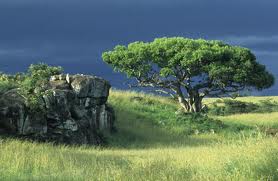Hunting Clones In the Caucuses
 Sunday, November 14, 2010 at 3:40PM
Sunday, November 14, 2010 at 3:40PM  A mature fig treeNot all government workers are desk jockeys or time-card punchers. Consider Malli Aradhya, a geneticist in the employ of the U.S. Deparmtent of Agriculture. He travels around the globe to find perfect fruit specimens to bring back to the States for study and, one day, possibly harvest. The Smithsonian recently got to tag along:
A mature fig treeNot all government workers are desk jockeys or time-card punchers. Consider Malli Aradhya, a geneticist in the employ of the U.S. Deparmtent of Agriculture. He travels around the globe to find perfect fruit specimens to bring back to the States for study and, one day, possibly harvest. The Smithsonian recently got to tag along:
To botanists, this region of the Caucasus Mountains is known as a center of diversity for figs as well as mulberries, grapes, walnuts, apricots, pomegranates and almonds. All have grown here for millennia and through constant sexual reproduction have attained a tremendous range of genetic diversity, the variation easily seen on a walk through most villages or a visit to a large fruit bazaar.
It’s precisely this spectrum of colors, shapes, sizes and flavors that has drawn Malli Aradhya to the lowlands of the Republic of Georgia, a former Soviet nation banking the Black Sea and just south of the Greater Caucasus Mountains. He is a geneticist with the U. S. Department of Agriculture, and this is his fifth fruit-hunting expedition to the region in six summers. His objective: to collect tree crop varieties, transport them home as seeds and wood cuttings and—after the samples pass through federal and state inspection sites—propagate them at the USDA’s Wolfskill Experimental Orchards in Winters, California. This 70-acre varietal library, operated in conjunction with a test nursery at the University of California at Davis, is home to two “copies” each of several thousand plant accessions, many collected on excursions like this one. Aradhya himself has brought home some 500 of them on four trips to Azerbaijan and Kyrgyzstan.
Still, the collection, part of the National Clonal Germplasm Repository program, has its holes. Aradhya wants, for example, new rootstock varieties of pistachio, a blight-resistant walnut and figs sweet enough to sell yet sturdy enough to handle the bumpy rigors of post-harvest transportation—and all may exist in the orchards, villages and wild lands of Georgia.
The scientist is still jet-lagged by a 24-hour spell of travel when he visits a farmers market in the Gldani District of Tbilisi, the nation’s capital. Following behind two fruit geneticists from the Georgian Institute of Horticulture, Viticulture and Oenology, Aradhya eyes the heaps of apples, plums, nuts and figs with the discerning attention of, well, a fruit geneticist.
Read the full story here.
 US Department of Agriculture,
US Department of Agriculture,  figs,
figs,  fruit
fruit 